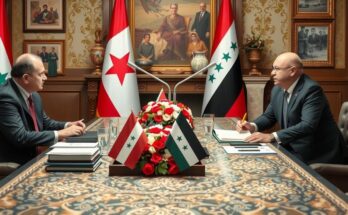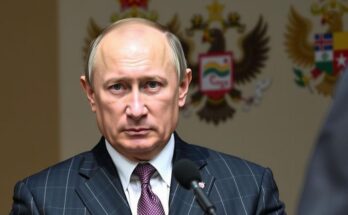The ceasefire between Israel and Lebanon initiates a 60-day withdrawal plan, with Israel’s army pulling back and Hezbollah relocating its arms. Amidst military escalations, this agreement seeks to stabilize the region but faces skepticism regarding its permanence. Internal pressures within both nations, particularly concerning Hezbollah’s influence, complicate the potential for peace. Ultimately, the ceasefire represents either a significant opportunity for political reform in Lebanon or merely a temporary halt to conflict.
The recent ceasefire agreement between Israel and Lebanon has initiated a pivotal transitional period, aiming for peace after prolonged conflict. This accord stipulates the Israeli army’s withdrawal from southern Lebanon over 60 days, accompanied by the Lebanese army’s deployment along the border and Hezbollah’s relocation of heavy weaponry northward of the Litani River. While this development holds potential for stability, regional dynamics remain tense, and skepticism persists regarding whether it is a step towards lasting peace or a mere temporary halt in hostilities.
In the days leading up to the ceasefire, both sides engaged in significant military operations. Hezbollah targeted major Israeli cities, while Israeli aircraft bombed Hezbollah leaders in southern Lebanon. This escalated the conflict further, as Israel aimed to retain negotiation leverage by striking military assets and mixed civilian areas. Israel’s urgency is tied to diplomatic pressures from the United States, which has warned Israel about ongoing Security Council resolutions that could incur political and economic repercussions.
Prime Minister Benjamin Netanyahu is facing domestic critiques from extremist factions who view the ceasefire as capitulation, potentially allowing Hezbollah to rearm, posing a risk for renewed conflict. Nevertheless, Netanyahu perceives a dual opportunity here: to stabilize the region while also pursuing broader agreements involving nations such as Syria, particularly amid U.S. support for Middle East peace initiatives.
Under the ceasefire agreement, this 60-day window is crucial, as it establishes frameworks for both military withdrawals and monitoring mechanisms to prevent Hezbollah from receiving further weaponry. Commitments include deploying a five-member committee from Lebanon, Israel, the U.S., France, and UNIFIL to oversee compliance, emphasizing the international community’s role in maintaining peace.
The broader context underscores Lebanon’s role as a proxy battleground linked to Iran’s strategic interests and sectarian dynamics since the mid-1980s. Hezbollah’s military involvement and political power have historically deepened sectarian tensions and internal discord. With Heather’s declared war on Israel, the current diplomatic efforts might signal a chance for Lebanon to shift away from violence, but achieving political cohesion remains challenging given the historical scars of civil conflict.
Although Hezbollah has faced significant losses and backlash from various factions within Lebanon, it continues to play a vital role in the political landscape. The potential for a new generation of leaders within Hezbollah may influence future strategies and approaches, especially with the ongoing pressures from international and local actors.
Ultimately, the ceasefire provides a moment for both Lebanon and Israel to reassess their positions. For Israel, it avoids immediate international sanctions and allows focus on other fronts such as Gaza. For Lebanon, it presents a chance to strengthen political institutions and mitigate Hezbollah’s pervasive influence. However, the region’s future remains uncertain, contingent upon regional cooperation, societal unity, and inclusive governance that involves all sects, including Hezbollah. The conclusion rests upon whether this alarming ceasefire will pave the way for enduring peace or simply mark a temporary reprieve from hostilities.
The recent escalation of conflict between Israel and Hezbollah has roots in a complex interplay of regional rivalries and historical grievances. Since the mid-1980s, Lebanon has been a critical theater for Iranian influence in the region, particularly through its support of Hezbollah, which serves as a militant proxy against Israel. The announcement of a ceasefire comes at a time of heightened tensions coinciding with Hassan Nasrallah’s declarations of war against Israel, creating an urgent need for a cessation of hostilities. The political landscape in Lebanon is marred by sectarian divisions, heavily influenced by Hezbollah’s military prowess and its relationships with Iran and Syria.
The ceasefire between Israel and Lebanon represents a significant yet precarious pause in hostilities. While it offers a potential pathway for stability and the restructuring of governance in Lebanon, key challenges persist. The influence of Hezbollah on Lebanon’s political direction must be addressed through inclusive dialogue among all factions. The journey toward lasting peace demands careful navigation of historical grievances and proactive engagement from all societal sectors to foster a consensus capable of bridging sectarian divides and mitigating future conflicts.
Original Source: www.dailynewsegypt.com




